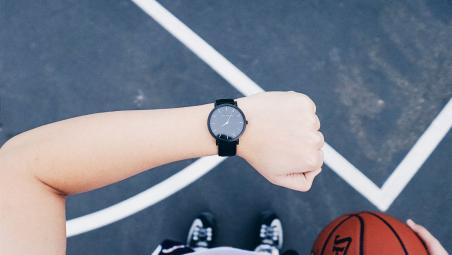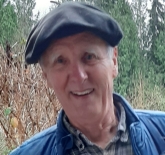10 Ways to Improve Physical Culture in Our Schools

Previously published in Volume 83, Issue 2
I have been a strong advocate for the health and well-being of children and youth for more than 60 years. The recent national report showing that Canadian children are well behind other countries in terms of active lifestyles and health has prompted me to cite some of the ironies associated with this issue. Embedded in each ironic statement, however, is a big part of the solution to the issue at hand.
The very first step in finding ways to enhance the health of our young people is to become more fully aware of the causes of our failings. My observations are offered in this vein. Following the list of ironies is a tentative manifesto for improving the lot of our children and youth.

14 ironic points about health and well-being for Canadian children
- We have the most highly trained teachers in history as well as sophisticated school and recreation facilities yet our students are shown to be inactive and unhealthy when compared to their counterparts in other countries.
- We have a multicultural society that is held up as being a model of integration around the world, yet we do little to involve immigrant youth and their respective physical cultures in our programs.
- In schools we preach healthy lifestyles and good nutrition, yet our school lunch programs and canteens often provide comfort foods rather than nutritious meals and snacks.
- We pride ourselves on being enlightened in our gender-free approach to education yet our gymnasiums and playing fields are often male-dominated in free-time periods and at other times.
- The notions of the whole child and physical activity have been recognized as being central to our educational enterprise yet we universally emphasize programs that are sedentary in nature and involve students in desk-bound and computer-based activities. Academic learning, particularly mathematics, is seen as primary in the lives of our kids while there is little evidence that these subjects are keys to successful and happy lives.
- We have more sophisticated sporting and recreational facilities than ever before, coupled with the smallest class sizes in history, yet the products of our systems are obese in record numbers and seldom elect to take our optional classes when they can.
- Millions of dollars are devoted to playground upgrading, yet school yards and recreational facilities are dominated by Disneyland structures rather than the natural play environments that most adult recall as providing the adventure and challenge that made their childhoods enjoyable.
- The observation of children and youth in social and recreational settings is a vital part of our work with the young, yet because of labour relations and teaching contracts we have farmed-out recess and lunch-time supervision to teacher aids and others.
- The most gifted athletes in our schools and communities get a disproportionate amount of leadership time while more naïve learners and the less skilled are neglected; those who are most capable of learning independently are cast in dependent roles.
- Our teacher education institutions give lip-service to the teaching of physical education while rewarding those who elect to enter non-school, more entrepreneurial enterprises.
- Ours is a games-dominated culture that emphasizes running and game skills above all while many needs and interests of youth are in the areas of dance, gymnastics and other physical culture areas.
- The physical activities that are embraced by youth and adults in our western culture have arisen not because of our work with children and youth in schools but ironically as a result of their own playful spirit and in spite of our work with them in schools.
- A host of schools in our province have adopted the Active Schools Program, yet on a given spring morning it is highly likely that most physical education classes in both elementary and secondary schools will find a group of youngsters playing an innocuous game of softball with very little actual physical benefit or learning going on for any in the class.
- We have authored many fine programs in the past at local, provincial and national levels that have been successful yet these programs and projects are often savaged and abandoned as new politicians, bureaucrats and educational leaders have come to power.
A partial reform manifesto for physical culture in schools and communities
- Choice should be given to children and youth so that they may learn through the process of making wise and unwise decisions over time.
- Fun and enjoyment should be a main by-product of participation. If youth enjoy what they are doing, they will be more likely to continue to pursue those activities in the future.
- We need to challenge students to improve, to do their best. They need to set goals, to accept challenges and healthy stressors that allow them to grow and develop.
- We must introduce ways and means that cause children and youth to feel comfortable and secure in the learning and activity environment.
- We need to move from novelty and fragmented activities to authentic experience that has meaning in the lives of youth. This relies greatly on the establishment of a trusting relationship between youth and adult leaders and exposure to a wide range of activities and skills.
- Cooperative as well as competitive programs and activities should be integral to our programs in schools and communities.
- Programs in schools needs to be matched to the interests, needs and experiences of students rather than the mass exposure approach that is common. Individualization is needed in physical education as much as is in other school subjects.
- The education of elementary school teachers must include appropriate courses in the teaching of physical education to ensure that all teachers of young children are qualified to teach the subject.
- Confidential cumulative health, skill and fitness records need to be kept to record a student’s progress over time and these records should be used by teachers to plan for individual programs in concert with parents and community health professionals.
- Schools and parks should be developed with youth and adult participation according to the best environmental and naturalization standards rather than relying upon the commercial marketplace and high tech equipment.
Change can only happen by first understanding the causes of our failing, then charting a course to change our direction.








